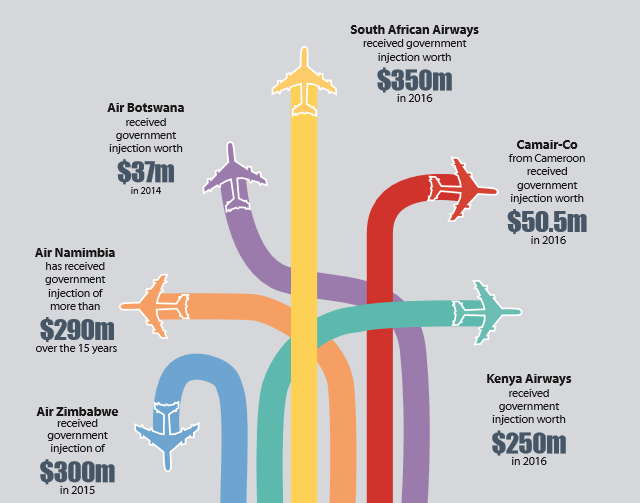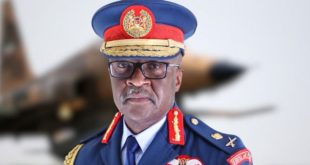
National pride
Jannie Rossouw, the head of School of Economic & Business Sciences at the University of the Witwatersrand in South Africa wrote in the Mail and Guardian that time when national airlines flew as carriers of national pride is a thing of the past as they have become major liabilities to their respective states.
“They must be cut loose to protect the pride of the nation,” he said, adding that with some exceptions, the situation in many developing countries is particularly bad that they can’t afford the huge financial burden that comes with failing national carriers.
To even make the situation worse, African carriers have continued to make losses every year. Latest data from the International Air Transport Association released mid last year shows that African carriers are expected to post a $500 million loss in 2016, a slight improvement on the $700 million that the region’s carriers lost a year before. Capacity growth (5.3%) is anticipated to outpace demand growth of 4.5%.
“Carriers in the region continue to confront a plethora of challenges including intense competition on long-haul routes, political barriers to growing intra-Africa traffic, high costs and infrastructure deficiencies,” the Association said in its assessment.
In addition, many major economies in the continent have been hit hard by the collapse of commodity prices, and the impact that has had on revenues and the inflow of hard currencies. Also, unresolved foreign exchange crises are adding to the economic difficulties facing airlines in this region.
Debate over the airline has risen since December 31, 2016, when President Yoweri Museveni said in his New Year message that the government has finalised a plan to revive a national air carrier. He said it would ease air travel and enable Ugandans to spend money on local rather than foreign airlines.
Earlier, during the 54th Independence Day celebrations in Luuka District in eastern Uganda, the President had made the same point.
“Somebody has told me that Ugandans are spending $420 million per year on travel,” he said, “The National Resistant Movement (NRM) Government has decided to start a national airline to stop the outflow of this money and to end travel inconveniences to Ugandans.”
In an interesting twist, the politicians and bureaucrats now accept reviving the airline does not make business sense. But, they say, a national carrier is needed not necessarily as a profit making business but as a facilitator of other sectors of the economy such as tourism and agriculture to leapfrog the country into the middle income status.
“We are not setting up the airline for a profit motive,” said Kisamba Mugerwa in an interview with The Independent, “Much as later, it can make money, what is important is its indirect linkages with tourism, exports like perishable goods and off course the costs of passengers in terms of the people who are travelling in and out of Kampala.”
What is not said is that Uganda Airlines had been flying for 10 years from 1976 on government subsidies until it was liquated by the Museveni government in 2001.
Then popularly known by its slogan as the ‘Flying Crane’, as a result of mismanagement, it had accumulated debt to a tune of $6million ($8million in current prices). In a controversial move at the time, the ground handling operations which were the only profitable part of the business were taken over by a private firm associated with Sam Kutesa, who is current minister of Foreign Affairs and is a relative of President Museveni taken over.
Several commentators have warned that even if it is revived, Uganda Airlines will fail again unless such political interference is avoided.
Under the new plan, the government says will initially lease at least six aircrafts, four for short-haul regional flights and two for long-haul and later acquire its own aircrafts.
 The Independent Uganda: You get the Truth we Pay the Price
The Independent Uganda: You get the Truth we Pay the Price


